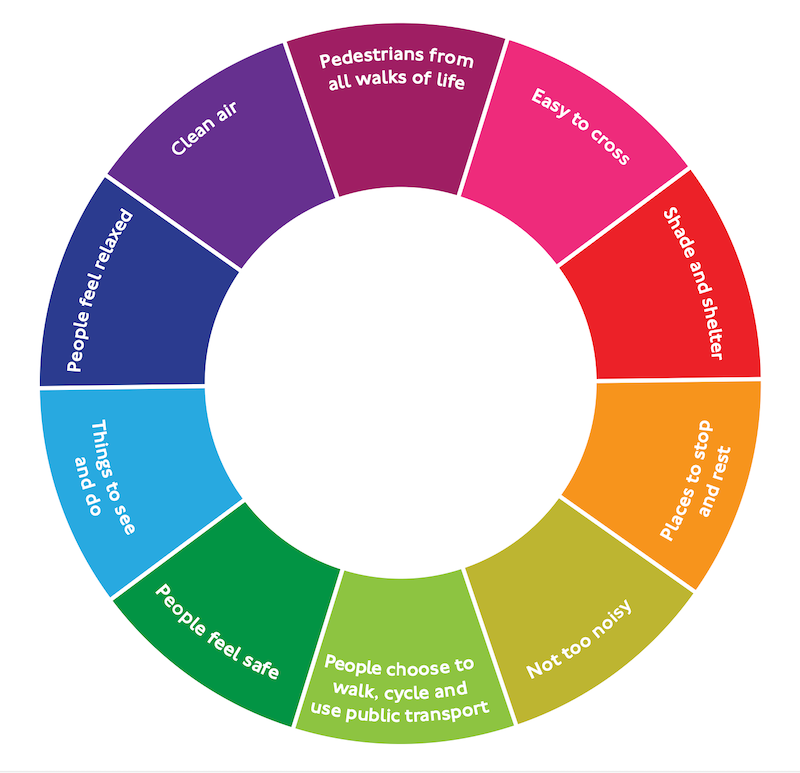Report reproduced with permission of Canonbury 2020: Improving Canonbury for and by residents
Mike Brown MVO, Transport Commissioner Transport for London, 2017:
The key to understanding the Healthy Streets Approach is to understand that most journeys made by Londoners start, end or happen entirely on our streets. To enable these streets to function in the way we want them to, we have to make them work for walking, cycling and public transport, so both individuals and the city as a whole can benefit.
TfL commissioned Lucy Saunders to develop a metric for healthy streets, a metric which we can all use on our own local streets here in Islington. Have a go! How does your street measure up ?
Pedestrians from all walks of life
London's streets should be welcoming places for everyone to walk, spend time in and engage in community life.
People choose to walk, cycle and use public transport
A successful transport system enables more people to walk and cycle more often.
Clean air
Improving air quality delivers benefits for everyone and reduces unfair health inequalities.
People feel safe
The whole community should feel comfortable and safe on our streets at all times. People should not feel worried about road danger.
Not too noisy
Reducing the noise impacts of traffic will directly benefit health and improve the ambience of our streets.
Easy to cross
Making streets easier to cross is important to encourage more walking and to connect communities.
Places to stop and rest
A lack of resting places can limit mobility for certain groups of people.
Shade and shelter
Providing shade and shelter enables everybody to use our streets, whatever the weather.
People feel relaxed
More people will walk or cycle if our streets are not dominated by motor traffic, and if pavements and cycle paths are not overcrowded, dirty or in disrepair.
Things to see and do
People are more likely to use our streets when their journey is interesting and stimulating, with attractive views, buildings, planting and street art.
Read more here: Guide to the Healthy Streets Indicators
And sign up for a newsletter by emailing info@healthystreetsscorecard.london!
Eilidh's active participation in the community she loves led her to set up the #inspiringsustainableislington site and generally inspire us to bigger and better things for our environment. Follow her on Twitter.








